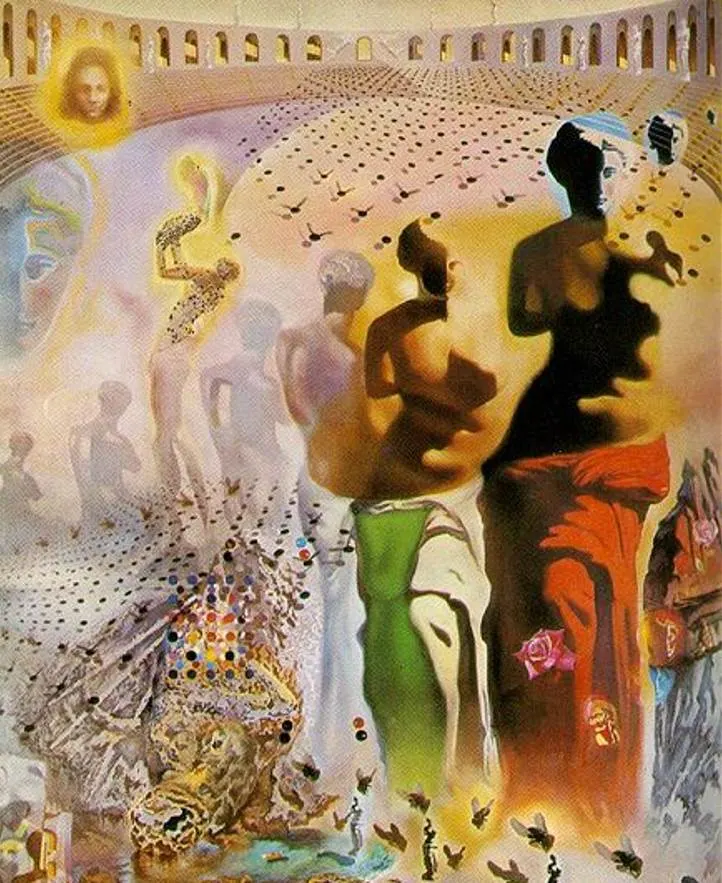This Spanish artist was born at a time when Avant-Garde artists were revolutionizing the world of art in the early 20th century.
Salvador Domingo Felipe Jacinto Dalí i Domènech, Marquess of Dalí of Púbol is the full name of a Surrealist artist commonly known as Salvador Dalí (1904-1989).
He was born in Figueres, a city in Girona, Catalonia, but received a formal art education at the San Fernando Royal Academy of Fine Arts in Madrid.
He was initially influenced by both Impressionists and Renaissance artists but his unconventional nature meant he was quickly drawing to Cubist art.
His most famous works are in the Surrealist style, a movement he became involved in and which has become synonym to his oeuvre since the late 1920s.
Fine draughtsmanship, peculiar subject matter, and impeccable skills are what define the paintings and sculptures of this eccentric figure in art history.
In this article, you’ll discover some of the most famous paintings by Salvador Dalí.
1. The Persistence of Memory
- Date created: 1931
- Dimensions: 24 × 33 centimeters (9.5 × 13 inches)
- Location: MoMA, New York City, United States
The Persistence of Memory isn’t just the most famous painting by Salvador Dalí, it’s also the best-known Surrealist painting in the world. The iconic image of the melting pocket watch is surely something you have seen already as it has been reproduced in various forms of media all around the world.
This painting revolves around the artist’s theory about soft and hard, something the tried to solve through his art in the early 1930s. Another notable element is the monster in the foreground. It has been suggested that it was inspired by a similar figure in the Paradise section of the famous Hieronymus Bosch painting titled “The Garden of Earthly Delights.”

2. Dream Caused by the Flight of a Bee
- Date created: 1944
- Dimensions: 51 × 40.5 centimeters (20 × 15.9 inches)
- Location: Thyssen-Bornemisza Museum, Madrid, Spain

Dream Caused by the Flight of a Bee is the short title of a painting fully known as “Dream Caused by the Flight of a Bee Around a Pomegranate a Second Before Awakening.” It’s one of the many paintings by Dalí that he produced using his special Surrealist technique which he called “hand-painted dream photography.”
The woman in the painting is believed to be his wife, Gala Dalí (1894-1982) who is having a dream while lying on a rock, partially levitated, with a seascape in the distance. The elephant with long legs is believed to have been inspired by a Bernini sculpture in Rome called “Elephant and Obelisk.”

3. Metamorphosis of Narcissus
- Date created: 1937
- Dimensions: 51.2 × 78.1 centimeters (20.12 in × 30+3⁄4 in)
- Location: Tate Modern, London, United Kingdom
Metamorphosis of Narcissus is the title of a painting that is considered to be one of the best examples of the Paranoiac-critical method that Dalí devised in the 1930s. This revolved around purposely invoking a state of paranoia before starting to paint.
The result of the artist’s interpretation of the Greek myth of Narcissus can be seen in this work. Narcissus is depicted on the left with his head resting on his knee. The reflection on the right features a cracked egg out of which a narcissus flower emerges.
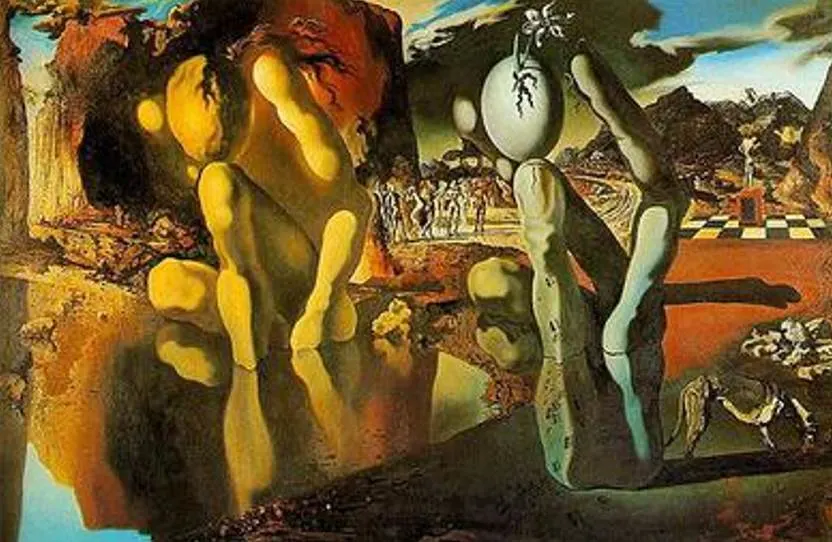
4. Swans Reflecting Elephants
- Date created: 1937
- Dimensions: 51 × 77 centimeters (20.08 × 30.31 inches)
- Location: Private Collection
Swans Reflecting Elephants is another painting that was produced using the artist’s paranoia-critical method. The main feature of this technique is the double image, something he explained in great depth in his work titled “The Conquest of the Irrational” (1935).
He used the same method to produce the double reflection in a lake as in Metamorphosis of Narcissus. The long necks of the swans in the lake become the trunks of elephants in the reflection. The background features leafless trees and a rather bleak Catalan landscape.

5. The Great Masturbator
- Date created: 1929
- Dimensions: 110 × 150 centimeters (43.3 × 59.1 inches)
- Location: Museo Nacional Centro de Arte Reina Sofía, Madrid, Spain
The Great Masturbator is another peculiar painting by Salvador Dalí which he created at the height of the Surrealist era. The work revolves around a distorted human face that is looking downward. It’s based on the rock formation known as Cap de Creus in Catalonia.
The painting features a wide variety of elements that might refer to traumatic experiences in Dalí’s youth and some conditions that he was suffering from as an adult. He held onto this work until he passed away and it hung at the Dalí Theatre and Museum in Figueres until it was bequeathed to the Spanish state.

6. The Temptation of St. Anthony
- Date created: 1946
- Dimensions: 90 × 119.5 centimeters (35 × 47 inches)
- Location: Royal Museum of Fine Arts of Belgium, Brussels, Belgium
The Temptation of St. Anthony is a remarkable work of art by Salvador Dalí and is considered to e a precursor of a later phase in his career known as his classical period or the “Dalí Renaissance.” It was the only painting he ever submitted to a competition for a film of the same title produced by David L. Loew and Albert Lewin.
This particular subject had been popular among artists for centuries, but none of them could have envisioned the type of work that Dalí produced here. Saint Anthony can be seen kneeling in the bottom left corner in a desert landscape as a parade of long-legged figures approaches. Dalí didn’t win the competition with this work as his colleague, German artist Max Ernst (1891-1976), did.
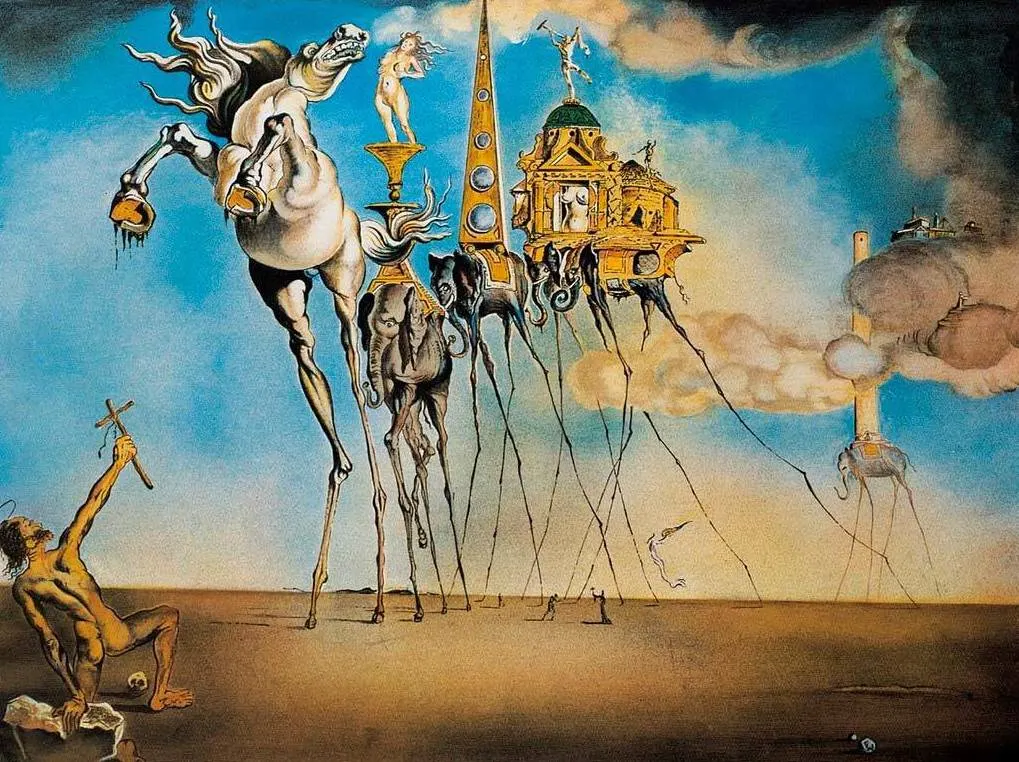
7. The Burning Giraffe
- Date created: 1937
- Dimensions: 35 × 27 centimeters (13.8 × 10.6 inches)
- Location: Kunstmuseum Basel, Basel, Switzerland
The Burning Giraffe is the title of a painting that Dalí produced shortly before he exiled himself to the United States between 1940 and 1948 due to the outbreak of World War II. It features several images that make art historians suggest that he was more politically involved than he proclaimed himself.
The other striking image is the female body he referred to as “Femme-coccyx” (tailbone woman) which features open drawers. This was a common motive in his oeuvre and he believed this to be an important part of the human experience. He once referred to it as:
The only difference between immortal Greece and our era is Sigmund Freud who discovered that the human body, which in Greek times was merely Neoplatonic, is now filled with secret drawers only to be opened through psychoanalysis

8. The Face of War
- Date created: 1940
- Dimensions: 64 × 79 centimeters (25.2 × 31.1 inches)
- Location: Museum Boijmans Van Beuningen, Rotterdam, Netherlands
The Face of War is also known as “The Visage of War” and was painted while the artist was living in California in 1940. It can be described as a reaction to the atrocities of the Spanish Civil War and the personal trauma that it left in the artist’s mind.
The face of a person is depicted against an arid desert landscape and is full of despair and anxiety. There are identical faces in the mouth and eye sockets of the head which is believed to be infinitely divisible. To heighten the drama, biting serpents are swarming around this face.
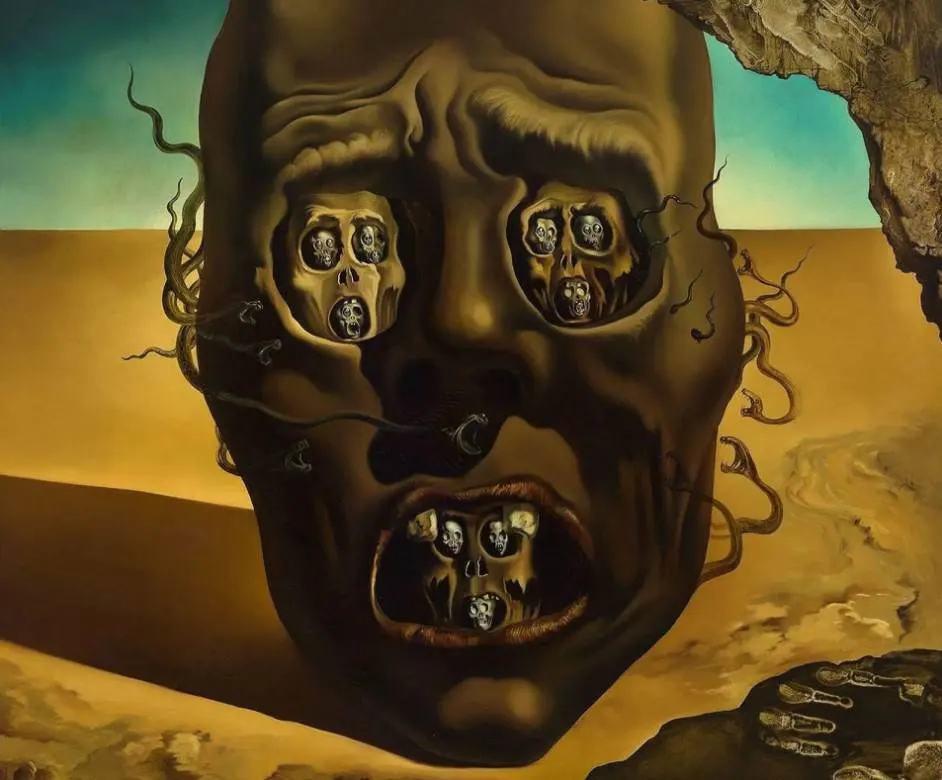
9. The Disintegration of the Persistence of Memory
- Date created: 1952-1954
- Dimensions: 25.4 × 33 centimeters (10 × 13 inches)
- Location: Salvador Dalí Museum, St. Petersburg, Florida, United States
The Disintegration of the Persistence of Memory is the title of a derivative work of Dalí’s world-famous the Persistence of Memory. The original title of the work was “The Chromosome of a Highly-coloured Fish’s Eye Starting the Harmonious Disintegration of the Persistence of Memory.”
Several elements such as the iconic melting clocks returned, as well as the landscape of Cadaqués in the distance. The main difference is that the distant landscape is now flooded with water. The foreground is full of bricks which represent the breakdown of matter into atoms.
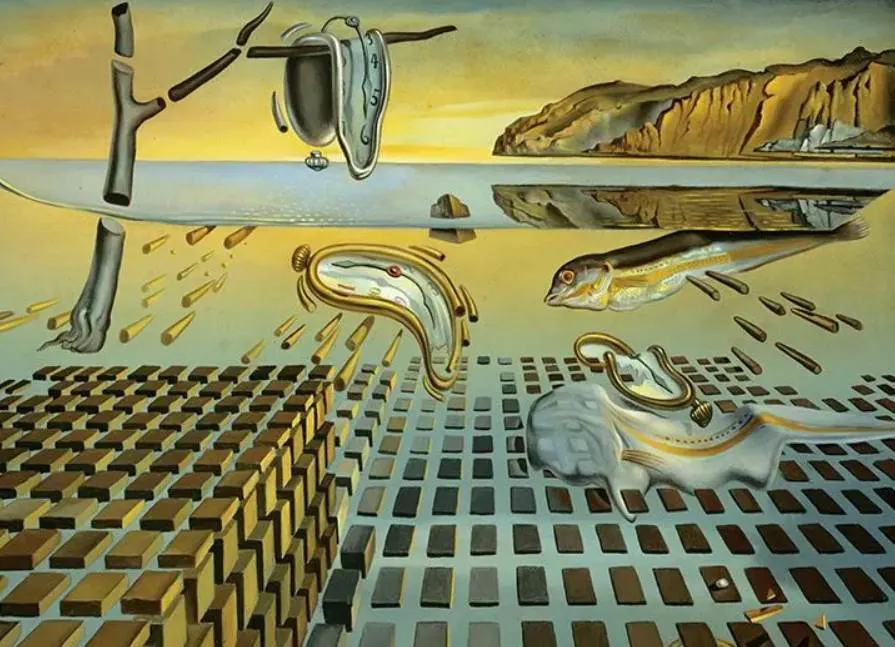
10. The Hallucinogenic Toreador
- Date created: 1969-1970
- Dimensions: 398.8 × 299.7 centimeters (157 × 118 inches)
- Location: Salvador Dalí Museum, St. Petersburg, Florida, United States
The Hallucinogenic Toreador is a painting that was produced in the Surrealist style in which the artist tried to visually represent his wife’s profound dislike for bullfighting. That’s why the entire scene takes place inside a large bullfighting arena.
He integrated the colors of the Spanish flag and the slain bull slowly transforms into the shape of the landscapes of Cap de Creus, a common subject in Dalí’s paintings. The sculpture of Venus de Milo appears 28 times in this breathtaking work of art.
